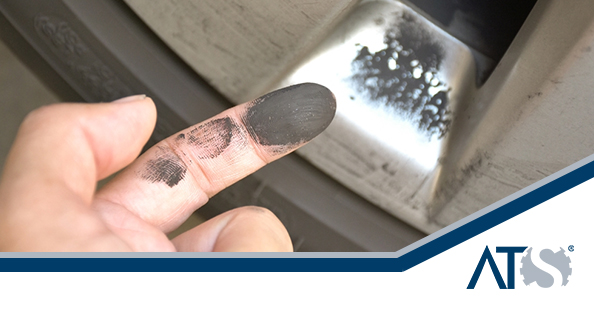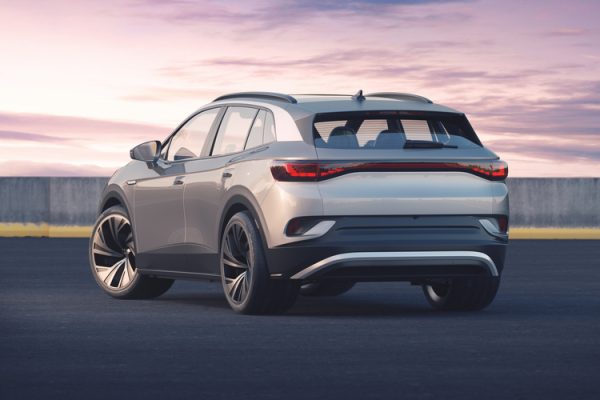This aspect of Euro 7 has sent suppliers of automotive and commercial vehicle brake components into a flurry of activity. Given that commercial vehicles adhere to distinct compliance levels, these suppliers are in a rush to decipher how the upcoming regulations will impact their existing technologies and ponder the development of novel solutions. The proposed Euro 7 guidelines also confront the emissions arising from fine microplastic particles resulting from tire friction on road surfaces. However, as of late Spring 2023, the European Commission had not assigned permissible values for tire particulates.
A report from the European Environment Agency in 2022 on air quality in Europe revealed that in the EU in 2020, “96% of the urban population was exposed to levels of fine particulate matter exceeding the health-based guideline level set by the World Health Organization.” The EEA emphasized that “exposure to concentrations of fine particulate matter surpassing the 2021 World Health Organization guideline level resulted in 238,000 premature deaths in the EU-27.”
A highly referenced 2020 study by UK-based Emissions Analytics found that tire particulate emissions can be significantly higher than particulates emitted from ever-cleaner vehicle tailpipes. Anticipating the potential impact of the world’s increasing share of EVs, which are effectively mandated for EU passenger vehicles starting in 2035, was a subsequent statement the firm made in May 2022 regarding EVs in relation to tire particulate emissions: “Greater vehicle mass and [propulsion] torque delivered can lead to rapidly increasing tire particulate emissions. Half a tonne of battery weight can result in tire emissions that are almost 400 more times greater than real-world tailpipe emissions, everything else being equal.”
Brake emissions are typically measured in the PM10 range (inhalable particulate matter of 10-micron diameter or smaller; think common dust and pollen) or the PM 2.5 (fine dust of 2.5 microns or smaller) band. The Euro 7 standard aims to reduce particulate emissions by 27%, a maximum of 7 mg per kilometer until 2035. Starting in 2035, the brake emissions limit is further reduced to 3 mg/km.
According to Patricio Barbale, Chassis Team Lead at S&P Global Mobility, automakers and braking suppliers are more concerned with 2025 than 2035. “The most important impacting factor is the timing, you have one year, one year and a half, to be compliant.”
Barbale highlighted what he believes will be the two central strategies for Euro 7 brake emissions compliance: vehicle electrification and innovations in friction materials.
Electrification factor
He explained that the Euro 7 rules allow for a correction factor that subjects vehicles with varying levels of electrification to different levels of permitted brake particulate emissions, an aspect that hasn’t been elaborated in most broad discussions of the new Euro 7 regulation. “In theory, the most important thing is that there is a correction coefficient for the type of engine in the vehicle,” he said. “If you have an electric vehicle, it is not the same as an ICE vehicle. If you have a pure electric vehicle, only 15 percent [of total emissions are] considered.”
Euro 7 provides a ladder of compliance-correction factors for brake emissions based on the degrees of vehicle electrification, effectively making this part of the regulations another incentive to transition to EVs. A pure ICE vehicle is treated under the rules on a 1:1 ratio: if its brake emissions are measured at 10 mg/km, for example, the ICE vehicle is rated by its entire output and would have to find a way to reach the 7 mg/km maximum allowed in Euro 7.
An EV emitting the same 10 mg/km, on the other hand, is rated at just 0.15 of its measured output, so Euro 7 would consider its baseline brake emissions just 1.5 mg/km, well below the 7 mg/km allowed in 2025 and even comfortably meeting the 2035 maximum of 3 mg/km. Following EVs are plug-in hybrids (PHEVs) with a correction factor of 0.3; conventional hybrids (HEVs) are corrected at 0.4 and mild hybrids at 0.6.
“Having an electric vehicle is a big advantage for this regulation,” Barbale stressed. “Of course, the complete battery electric vehicle is expensive. But if you think about a mild-hybrid vehicle that is [essentially] a traditional ICE vehicle plus a small 48-volt battery, it’s not a big addition to the vehicle, and you [are allowed] a reduction of 40 percent of the emissions.”
The generous correction factor for EVs and high-voltage HEVs acknowledges the expected high degree of regenerative braking theoretically available with those vehicles, braking that happens with zero particulate emissions because the friction brakes are not used. Bosch, a major braking-system developer, indicated that vacuum-independent [i.e. fully electric] regenerative braking systems “can decrease brake dust emission by even more than 95 percent.”
However, there is a flipside: EVs are significantly heavier than their non-electrified counterparts, and their weight can cause friction brakes, when used, to work harder. One Organization for Economic Cooperation and Development (OECD) study concluded EVs will emit from 3% to 8% more brake- and tire-related PM 2.5 because of their weight.
While the conversation about EVs’ actual brake emissions reductions will continue, expect a new generation of Euro 7-inspired hybrids to quickly arrive on the scene. “One thing that will happen is that many vehicles will move from traditional ICE to mild hybrid,” Barbale believes. “We will see after 2025 more mild-hybrid vehicles than expected.”


















